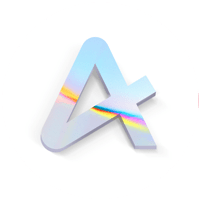menu
Why Governance Voting and DeFi in Terra’s Cosmos Ecosystem Demand a Wallet You Can Trust
So, I was just messing around with some governance proposals on Terra the other day, and wow—there’s a lot going on beneath the surface. Seriously, governance voting in DeFi protocols isn’t just a checkbox anymore; it’s becoming the real pulse check of decentralized communities. My instinct told me it’s not just about clicking “yes” or “no,” but about having the right tools that keep you connected and secure while doing it.
Here’s the thing. When you dive into the Cosmos ecosystem, especially Terra’s slice of it, you’ll notice that the complexity ramps up fast. Inter-Blockchain Communication (IBC) transfers, staking rewards, and voting on protocol upgrades all require a wallet that’s both nimble and rock-solid. Something felt off about some wallets I’ve tried—they either felt clunky or lacked seamless support for staking plus governance voting. That’s a real pain when you want to engage deeply but don’t want to juggle multiple apps.
Initially, I thought any wallet supporting Cosmos SDK chains would do just fine for Terra governance, but then I realized how much ease-of-use and security actually factor into active participation. It’s not just about holding tokens; it’s about empowerment. And you can’t underestimate that.
Okay, so check this out—Keplr Wallet has really nailed this blend of security and user experience. It’s kind of become my go-to for staking and voting in Terra’s DeFi protocols. The wallet’s integration with the Cosmos ecosystem means you can hop between chains, manage your assets, and cast votes without breaking a sweat. Plus, it supports IBC transfers smoothly, which is crucial if you’re moving assets between Terra and other Cosmos zones.
I’m biased, but the link here walks you through the setup steps if you want to see what I mean. It’s straightforward, really.
Now, diving into governance voting itself—Terra’s community proposals aren’t just technical updates; they can reshape entire economic models. DeFi protocols on Terra rely heavily on community consensus to adjust parameters like collateral ratios or transaction fees. So, your vote isn’t just symbolic; it can have immediate financial impacts.
It’s fascinating how this blends with DeFi’s core principle of user empowerment. But, here’s what bugs me about some wallets: they make governance voting feel like an afterthought, buried under layers of menus or requiring separate apps. That kills momentum and, honestly, discourages participation.
And don’t get me wrong—Terra’s ecosystem is one of the most vibrant in Cosmos, but it’s also incredibly fast-moving. New DeFi projects pop up, governance proposals fly by, and if your wallet can’t keep up, you’re left on the sidelines. I’ve seen that happen to good folks who just didn’t have the right interface at their fingertips.
By the way, the way Keplr integrates proposal notifications right into the wallet UI is a game-changer. You get pinged when a new vote opens up, and you can examine proposal details within the same interface. No more switching tabs or risking phishing sites—big plus for security.

One of the deeper insights I had recently is how Terra’s governance mechanisms tie directly into DeFi protocol parameters—not just governance tokens or staking rewards. Changes to lending rates or liquidation thresholds can be voted on by anyone with skin in the game. So if you’re staking LUNA or borrowing UST, your vote matters. That’s why a wallet that supports both staking and voting workflows seamlessly is very very important.
Oh, and by the way, IBC transfers are the unsung heroes here. Moving assets between Cosmos chains without trust intermediaries lets you participate in multiple governance processes across the ecosystem. Keplr’s support for IBC means you can shift tokens back and forth, stake on different zones, and vote—all within one app. That’s huge for power users.
At first, I thought multi-chain wallets were just a convenience, but now I see they’re foundational for the Cosmos-DeFi governance synergy. It’s like having one dashboard for your entire decentralized portfolio and voice. Makes you wonder why more wallets don’t prioritize this integration.
Still, I’m not 100% sure that every feature in Keplr is perfect. Sometimes the UX can feel a bit dense for newcomers, and the security model means you need to be super careful with seed phrases and extensions. But honestly, that’s the tradeoff for decentralized control. Centralized alternatives just don’t offer the same level of governance participation or asset mobility.
Why Active Governance Matters More Than Ever in Terra’s DeFi
Let’s zoom out a bit. Terra’s DeFi protocols, like Anchor or Mirror, rely on governance votes to tweak risk parameters, decide on new asset listings, or even elect community representatives. That means your voting power directly influences protocol stability and your own yields. Pretty wild when you think about it.
However, engaging in governance is a bit of a double-edged sword. On one hand, it empowers users to steer the protocols they use daily. On the other, participation rates can be low because of friction—either due to complicated wallets or lack of accessible info. This is a huge problem for decentralization in practice.
My take? The wallet you pick can either encourage or discourage your governance involvement. I’ve seen people stop voting simply because their wallet didn’t notify them or required too many steps. That kills the democratic spirit of DeFi.
So, when I started seriously using Keplr, I noticed how it nudges users toward voting without being pushy. Notifications, clear proposal summaries, and easy voting buttons all help lower the barrier. It’s subtle but effective. And that’s exactly what Terra’s ecosystem needs as it matures.
Here’s a quick tangent: some folks argue that DeFi governance is just a power play by whales. That’s partly true, but the more accessible voting is, the more voices you get, diluting whale dominance to some extent. Wallets that integrate governance smoothly are key to that balance.
Also, on a practical note, Keplr’s support for Ledger hardware wallets means you can secure your keys offline while still participating actively. That’s a comfort I didn’t realize I needed until I tried it.
Okay, so check this out—if you’re serious about staking and governance in Terra’s DeFi, you owe it to yourself to have a wallet that doesn’t just store tokens but actively helps you manage your on-chain influence. That’s why I keep coming back to Keplr, and you can find out more about it here. Seriously, it’s worth a look.
Still, I wonder how governance will evolve as Terra integrates more complex DeFi instruments. Will wallets keep up? Will voting become too technical? Those are questions for another day, but for now, having a wallet that bridges staking, IBC, and voting in one place feels like the best bet.
So yeah, governance voting and DeFi protocols in Terra’s Cosmos ecosystem are tightly intertwined, and your wallet choice can make or break your experience. I’m sticking with tools that respect that complexity and help me engage without headaches.
Frequently Asked Questions
Why is governance voting important in Terra’s DeFi ecosystem?
Governance voting allows token holders to influence key protocol parameters like interest rates, asset listings, and risk controls. Since these decisions impact yields and protocol stability, active voting helps keep the ecosystem healthy and user-aligned.
How does the Keplr Wallet support governance and IBC transfers?
Keplr Wallet integrates Cosmos ecosystem features by enabling seamless staking, governance voting, and Inter-Blockchain Communication transfers all within one interface. It also offers notifications for proposals and hardware wallet support for enhanced security.
Can I participate in multiple Cosmos chains’ governance with one wallet?
Yes! Thanks to IBC and multi-chain support, wallets like Keplr let you manage assets and vote across various Cosmos zones, including Terra, without juggling separate wallets or apps.






















